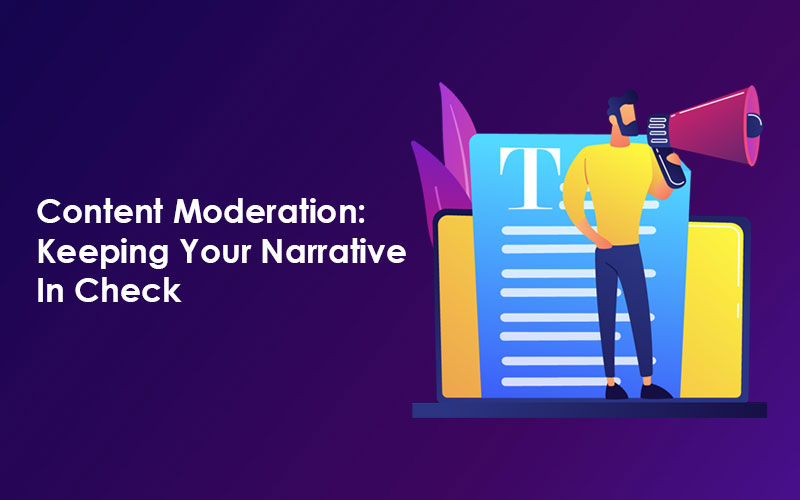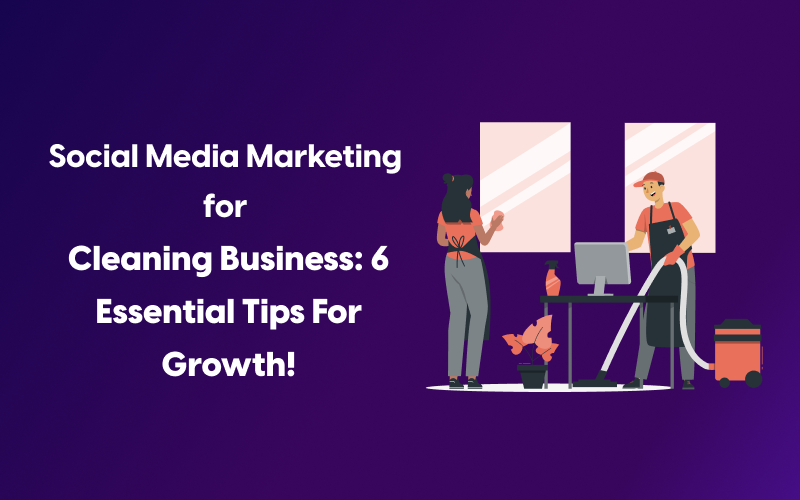Hello, everyone! Let me kick off by asking you a question. Do you realize how powerful content is in the digital landscape?
It’s a force, really. A force that drives traffic to your website keeps your audience engaged and skyrockets your brand’s visibility. Sounds fantastic, doesn’t it?
But there’s a catch. With great power comes great responsibility. And in the digital world, that responsibility is ‘content moderation.’
Now, you might be thinking, what’s the big deal about moderating your content?
Hold that thought.
Today, we’re diving headfirst into the world of content. We’ll explore what it is, why it matters, and how it can transform your digital presence. By the end of this post, you’ll be armed with everything you need to know about moderating content.
So, are you ready to become a content moderation pro? Let’s dive in!
The Concept of Content Moderation
We’ve all heard the phrase, “Content is king.” But what happens when the king goes rogue? That’s where moderating your content comes into play.
Think of moderating content as the royal guard. It’s the process of monitoring, reviewing, and managing user-generated content on your digital platforms.
You know, all those comments, posts, reviews, videos, and images your users love to share? Content moderation monitors them, ensuring they meet your community’s standards and policies.
But here’s the kicker, there isn’t a one-size-fits-all approach to moderating content. Instead, like the different pieces in a chess game, each type of content moderation plays a unique role.
Pre-moderation is like the pawn, taking the first step and vetting content before it goes live. Reactive Moderation is the knight, jumping in when a user flags inappropriate content.
In Distributed Moderation, the bishop relies on community votes to approve or disapprove content.
And Automated Moderation is the queen, using AI and machine learning to quickly and efficiently moderate content.
Now, why does all this matter?
First, let’s take a moment to think about the sheer volume of content uploaded every day. YouTube alone sees 500 hours of video uploaded every minute. Facebook?
They’re looking at 300 million photos each day. It’s a content tsunami!
And this is why moderating content is necessary for businesses and online communities. Without it, your brand reputation could be at risk.
Imagine the damage one inappropriate or harmful post could do. But it isn’t just about damage control. It’s also about fostering a safe, enjoyable online environment. One where users feel valued, heard, and protected.
The Need For Content Moderation In This Digital Age
We’re living in the digital age. An age where everyone can be a publisher, a filmmaker, or a photographer. Thanks to social media and other digital platforms, the ability to create and share content is at our fingertips.
But with great power comes great responsibility. And that’s where content moderation steps in.
Picture this. You’re hosting a party. A great party with lots of guests. Everyone’s mingling, having fun, and sharing stories.
But what happens if someone starts behaving inappropriately? The mood changes, right? The party doesn’t feel so fun anymore.
In the online world, content moderation is the host that steps in to handle those unruly guests.
Moderating content has a critical role in managing user-generated content. The gatekeeper ensures the user-generated content aligns with your brand values, community guidelines, and the laws of the land. It’s a lot to juggle, but moderating content does it with finesse.
Whether it’s text, images, videos, video cutter, or even live streaming, content moderation has covered it. It sifts through the endless stream of user-generated content, swiftly identifying and dealing with inappropriate material.
And it’s not just about removing the bad stuff. Instead, it highlights the good, promoting positive engagement and fostering a healthy online community.
But it isn’t just good for business. It’s crucial for protecting online users, too. With the growing number of young internet users, the need for constant and vigilant Moderation is clear.
It’s about creating a safe and inclusive online space for everyone. A space where users can express themselves without fear of encountering objectionable content.
Types of Content Moderation
Content moderation is not one-size-fits-all. It’s a tailored suit, custom-fit for your specific business needs. It comes in various types, each with its strengths and weaknesses. Let’s break them down:
First up, we have Pre-moderation and Post-moderation. Picture a nightclub. Pre-moderation is the door bouncer checking IDs and deciding who gets in.
It’s about reviewing content before it goes live. It keeps the riff-raff out, but it can slow down the party.
On the other hand, post-moderation is like cleaning up after the party. It lets everyone in but then checks for any mess. It’s quicker, allowing for real-time posting, but it can mean a few inappropriate comments slipping through before they’re caught.
Then there’s Reactive Moderation and Distributed Moderation. Reactive Moderation is like having a complaint box. It relies on users to report any inappropriate content. It’s cost-effective, but it can put a burden on your users.
Distributed Moderation, meanwhile, is like having a committee of bouncers. It’s a community-driven approach where users rate and review each other’s posts. It fosters community engagement but can be unpredictable.
Now, let’s talk about Automated and Human Moderation. It’s a bit like having robots versus humans at the door. Automated Moderation uses algorithms to filter content based on predefined rules. It’s fast and can handle vast content, but it might miss the subtleties.
Human Moderation, on the other hand, relies on real people making judgment calls. As a result, it’s slower and can be more costly, but it’s excellent at understanding context and nuance.
And here’s the kicker. What is the best approach?
A combo of AI and humans. AI has come a long way, but humans are still the best at interpreting content. Think of it as a tag team.
First, AI handles the heavy lifting, instantly screening massive amounts of content. Then, when AI encounters something ambiguous, it tags in the human, who makes the final call.
Content Moderation in Various Content Types
Picture this: content is like the food at a buffet, served in different forms. And just like you wouldn’t use the same utensil for soup and steak, different content types require different moderation techniques.
Text content. It’s the bread and butter of online content. Moderation here involves scanning for inappropriate language, hate speech, or anything against your guidelines. Think of it as a spell-checker but for behavior.
Images. They say a picture is worth a thousand words, and it’s no different in Moderation. Therefore, analyzing images for explicit content or copyright violations is crucial. Imagine it like a vigilant art critic scrutinizing every detail.
Videos. They’re the showstoppers of the content world. Moderation here involves scanning visual and audio elements. It’s like a movie critic reviewing every scene and dialogue.
Benefits of Content Moderation For Businesses
Next up, let’s dive into why content moderation is a game-changer for businesses:
- Brand reputation: It’s a business’s most valuable asset. Imagine building a beautiful sandcastle, only to have it knocked down by one rogue wave. That’s what one piece of inappropriate content can do to your brand. Moderation helps protect your brand, keeping the beach clear of those rogue waves.
- Customer relations: Content moderation isn’t just about weeding out the bad but nurturing the good. You get to understand your customers better through sentiment analysis and social listening. It’s like having a heart-to-heart conversation with your customers, learning their likes, dislikes, and needs.
- User engagement: The impact of unmoderated content on user engagement is huge. An offensive comment can turn a lively conversation into a ghost town. Moderation keeps the conversation healthy and the engagement high. It’s like a great party host, keeping the conversation flowing and the guests happy.
- Scaling Marketing Campaigns: Have you ever wondered what user-generated content or video can do? Well, it can greatly impact the performance of your marketing campaigns as more people are now relying on customer reviews rather than listening to what brands brags about them.
key Mistakes to Avoid in Content Moderation
While content moderation is there to help you to maintain the delicate balance between freedom of expression and avoiding utter chaos, let’s dive into the key mistakes to avoid in this rather entertaining endeavor:
- One-Size-Fits-None Approach: Remember, not all platforms are created equal, and what works for one might not work for another. Tailor your moderation rules to suit the specific community you’re overseeing.
- Over-Automating the Process: Over-automating content moderation can lead to hilariously unfortunate results. Imagine innocent posts getting flagged because some quirky algorithm didn’t quite grasp the context.
- Ignoring Context: Context is king, my friend! A witty joke might be just what the internet doctor ordered, but taken out of context, it can seem downright atrocious. Always consider the bigger picture before hitting that “delete” button. Otherwise, you’ll be crushing comedic gold like a clumsy dragon sitting on its treasure hoard.
- Inconsistent Enforcement: Imagine playing a game where the rules change every five minutes. Annoying, right? Well, the same applies to content moderation. Consistency is crucial in earning trust and respect from your community.
Outsourcing Content Moderation
Outsourcing. It’s not just for manufacturing anymore. It’s like having a personal chef for your content moderation needs. You get the expertise, the tools, and the manpower without the overhead.
Advantages? Plenty. You get 24/7 coverage, a team of experts, and state-of-the-art tools. It’s like hiring a team of superheroes to guard your content. They work while you sleep, know what to look for, and have the best gadgets.
You can hire an SEO consultant for content moderation and marketing. From text, image, and video moderation to sentiment analysis and social listening, they will sort everything for you!
FAQs Regarding Content Moderation
Let’s get into some questions you might have. Some frequent ones. The stuff people ask all the time. You ready? Here we go.
What is BPO in Content Moderation?
First off, BPO. That stands for Business Process Outsourcing. In plain English, it’s like hiring an external company to take care of specific business tasks. In our context, it’s about outsourcing content moderation tasks.
Think of it this way: Instead of baking the bread yourself, you get it fresh from the bakery. It saves time, resources, and let’s be honest, their bread probably tastes better.
Can You Moderate Content Yourself?
Next up is self-moderation. Is it doable? Yes. Is it practical? That’s a different story.
Imagine you’re throwing a party. You could be the host and the bouncer, sure. But wouldn’t it be easier to enjoy the party if someone else checked the guest list?
Self-moderation can be a Herculean task, especially when dealing with a high volume of user-generated content. But you’ve got a business to run. So, let the experts handle the Moderation.
What is the Content Moderation Process?
Now, let’s talk about the process.
It’s like a high-tech assembly line. First, content comes in, goes through a series of checks and filters, and then it’s approved or rejected. And all this happens in real-time, ensuring a safe and positive online environment.
Imagine a digital conveyor belt, if you will. It’s efficient, fast, and designed to catch any inappropriate content.
The Bottom Line
We’ve been on a journey, haven’t we? From understanding what content moderation is, exploring its different types, and seeing how it fits into various content formats. We’ve discussed why outsourcing is critical for businesses and how it can help.
Remember, content moderation isn’t just a fancy term. It’s a necessity. In the digital age, it’s your lifeline. The invisible force keeps your online community clean, safe, and engaged.
If you run a business, don’t consider it an expense. Instead, think of it as an investment. An investment in your brand’s reputation. An investment in your customer relationships. An investment in your peace of mind.
Here’s the bottom line: Moderating content can make or break your online presence. It’s the unsung hero of digital customer experience. It’s the bouncer that keeps the bad guys out, the lifeguard that keeps your users safe.
So, take it seriously. Invest in it. Trust the experts. And remember, a well-moderated platform is a well-loved platform.




